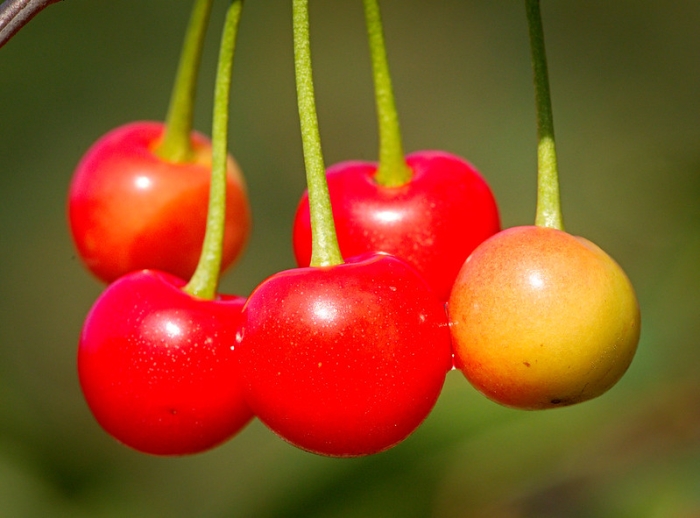Sweet Cherry
(Prunus avium)
Sweet Cherry (Prunus avium)
/
/

hedera.baltica
CC BY-SA 2.0


















































































Estimated Native Range
Summary
The Sweet Cherry is valued for its beautiful spring blossoms and is often used as an ornamental tree in parks and large gardens. It can also be planted as a street tree, although its size may limit this use. The tree is known for its ease of maintenance and is adaptable to a range of soil types, provided they have good drainage. It prefers full sun to part shade and requires medium amounts of water. While Sweet Cherry is primarily grown for its aesthetic appeal, it is also the parent species of many cultivated cherry varieties grown for fruit. Gardeners should be aware that the tree can suffer from pests and diseases such as cherry leaf spot, powdery mildew, and aphids. Additionally, the roots can be invasive, and care should be taken when planting near structures or pavement.CC BY-SA 4.0
Plant Description
- Plant Type: Tree
- Height: 15-30 feet
- Width: 15-30 feet
- Growth Rate: Rapid
- Flower Color: White
- Flowering Season: Spring
- Leaf Retention: Deciduous
Growth Requirements
- Sun: Full Sun, Part Shade
- Water: Medium
- Drainage: Fast, Medium
Common Uses
Bee Garden, Bird Garden, Butterfly Garden, Edible*Disclaimer: Easyscape's listed plant edibility is for informational use. Always verify the safety and proper identification of any plant before consumption., Fragrant, Rabbit Resistant, Showy Flowers
Natural Habitat
Temperate mixed forests and riverbanks
Other Names
Common Names: Mazzard Cherry , Wild Cherry , Bird Cherry , Gean , Gean Cherry , Fugle-Kirsebær , Vogel-Kirsche , Süßkirsche , Süßkirschenbaum , Herzkirsche
Scientific Names: Prunus avium , Cerasus cerasus , Cerasus avium , Prunus avium subsp. juliana , Prunus cerasus var. avium , Prunus avium subsp. duracina , Cerasus avium subsp. duracina , Cerasus duracina , Cerasus arduennensis , Prunus avium var. sylvestris
GBIF Accepted Name: Prunus avium (L.) L.